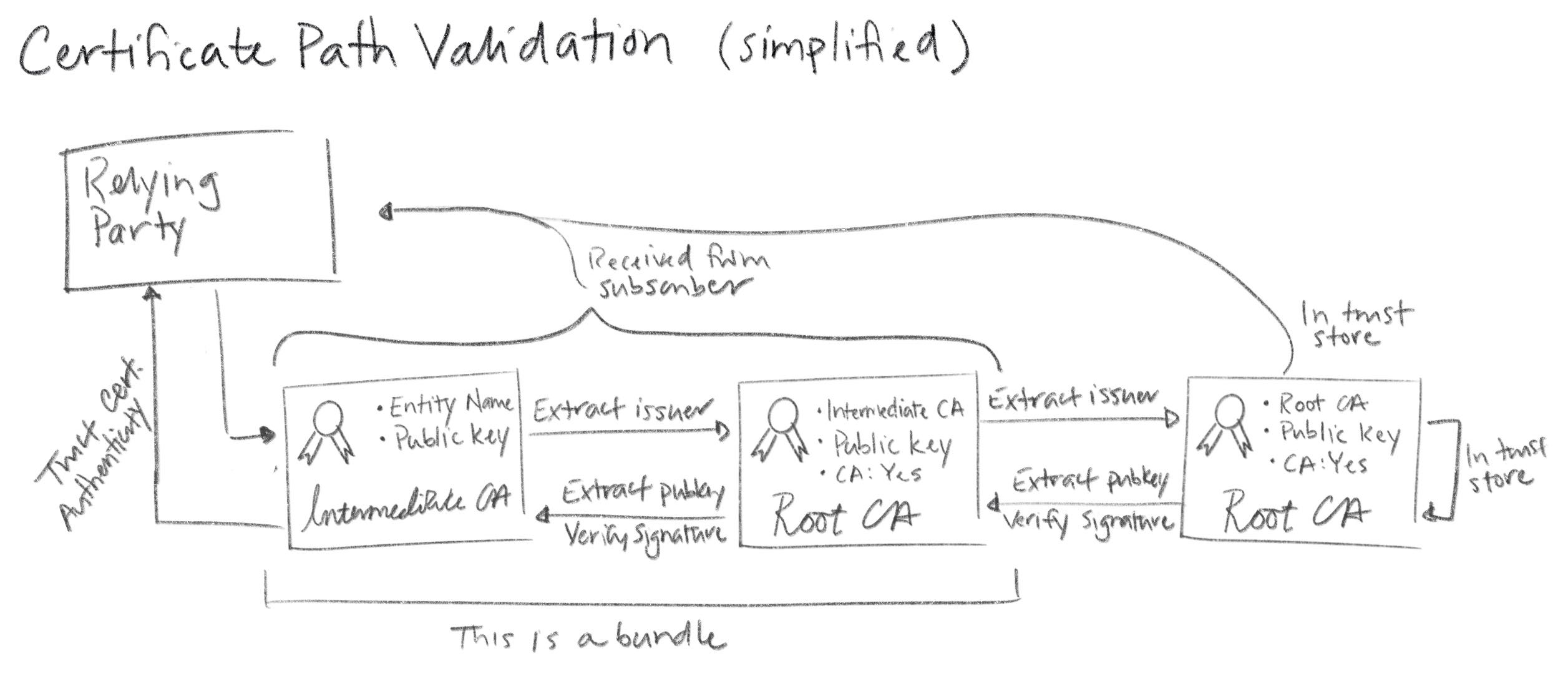Openssl Generate Certificate With Ec Key
- Openssl Generate Certificate From Csr
- Openssl Generate Private Key
- Openssl Generate Certificate With Ec Key Bluetooth
Creating certificates and keys for OpenVPN server with EasyRSA on MacOS This guide covers how to create certificates and keys for OpenVPN server and clients using the EasyRSA tool on MacOS. The instructions are very similar for most flavours of linux such as Ubuntu once the correct packages are installed (e.g. On Ubuntu: apt-get install openvpn. Generate an EC private key, of size 256, and output it to a file named key.pem: openssl ecparam -name prime256v1 -genkey -noout -out key.pem. Extract the public key from the key pair, which can be used in a certificate: openssl ec -in key.pem -pubout -out public.pem read EC key writing EC key.
| # Define where to store the generated certs and metadata. |
| DIR='$(pwd)/tls' |
| # Optional: Ensure the target directory exists and is empty. |
| rm -rf '${DIR}' |
| mkdir -p '${DIR}' |
| # Create the openssl configuration file. This is used for both generating |
| # the certificate as well as for specifying the extensions. It aims in favor |
| # of automation, so the DN is encoding and not prompted. |
| cat >'${DIR}/openssl.cnf'<<EOF |
| [req] |
| default_bits = 2048 |
| encrypt_key = no # Change to encrypt the private key using des3 or similar |
| default_md = sha256 |
| prompt = no |
| utf8 = yes |
| # Speify the DN here so we aren't prompted (along with prompt = no above). |
| distinguished_name = req_distinguished_name |
| # Extensions for SAN IP and SAN DNS |
| req_extensions = v3_req |
| # Be sure to update the subject to match your organization. |
| [req_distinguished_name] |
| C = US |
| ST = California |
| L = The Cloud |
| O = Demo |
| CN = My Certificate |
| # Allow client and server auth. You may want to only allow server auth. |
| # Link to SAN names. |
| [v3_req] |
| basicConstraints = CA:FALSE |
| subjectKeyIdentifier = hash |
| keyUsage = digitalSignature, keyEncipherment |
| extendedKeyUsage = clientAuth, serverAuth |
| subjectAltName = @alt_names |
| # Alternative names are specified as IP.# and DNS.# for IP addresses and |
| # DNS accordingly. |
| [alt_names] |
| IP.1 = 1.2.3.4 |
| DNS.1 = my.dns.name |
| EOF |
| # Create the certificate authority (CA). This will be a self-signed CA, and this |
| # command generates both the private key and the certificate. You may want to |
| # adjust the number of bits (4096 is a bit more secure, but not supported in all |
| # places at the time of this publication). |
| # |
| # To put a password on the key, remove the -nodes option. |
| # |
| # Be sure to update the subject to match your organization. |
| openssl req |
| -new |
| -newkey rsa:2048 |
| -days 120 |
| -nodes |
| -x509 |
| -subj '/C=US/ST=California/L=The Cloud/O=My Company CA' |
| -keyout '${DIR}/ca.key' |
| -out '${DIR}/ca.crt' |
| # |
| # For each server/service you want to secure with your CA, repeat the |
| # following steps: |
| # |
| # Generate the private key for the service. Again, you may want to increase |
| # the bits to 4096. |
| openssl genrsa -out '${DIR}/my-service.key' 2048 |
| # Generate a CSR using the configuration and the key just generated. We will |
| # give this CSR to our CA to sign. |
| openssl req |
| -new -key '${DIR}/my-service.key' |
| -out '${DIR}/my-service.csr' |
| -config '${DIR}/openssl.cnf' |
| # Sign the CSR with our CA. This will generate a new certificate that is signed |
| # by our CA. |
| openssl x509 |
| -req |
| -days 120 |
| -in '${DIR}/my-service.csr' |
| -CA '${DIR}/ca.crt' |
| -CAkey '${DIR}/ca.key' |
| -CAcreateserial |
| -extensions v3_req |
| -extfile '${DIR}/openssl.cnf' |
| -out '${DIR}/my-service.crt' |
| # (Optional) Verify the certificate. |
| openssl x509 -in '${DIR}/my-service.crt' -noout -text |
| # Here is a sample response (truncate): |
| # |
| # Certificate: |
| # Signature Algorithm: sha256WithRSAEncryption |
| # Issuer: C = US, ST = California, L = The Cloud, O = My Organization CA |
| # Subject: C = US, ST = California, L = The Cloud, O = Demo, CN = My Certificate |
| # # .. |
| # X509v3 extensions: |
| # X509v3 Basic Constraints: |
| # CA:FALSE |
| # X509v3 Subject Key Identifier: |
| # 36:7E:F0:3D:93:C6:ED:02:22:A9:3D:FF:18:B6:63:5F:20:52:6E:2E |
| # X509v3 Key Usage: |
| # Digital Signature, Key Encipherment |
| # X509v3 Extended Key Usage: |
| # TLS Web Client Authentication, TLS Web Server Authentication |
| # X509v3 Subject Alternative Name: |
| # IP Address:1.2.3.4, DNS:my.dns.name |
| # |

Openssl Generate Certificate From Csr
Localhost connections to the PostgreSQL database do not use TLS. To enable TLS, you can generate your own self-signed certificate with OpenSSL or provide your own certificate. Diablo 2 cd key.
Openssl Generate Private Key

Openssl Generate Certificate With Ec Key Bluetooth
- To generate a self-signed certificate with OpenSSL, run the following commands:
- To provide your own certificate, complete the following steps:
- Modify the ownership of the CAcerts.crt file to postgres.
- Edit the postgresql.conf file to include the directive
ssl_ca_file = 'CAcerts.crt.If you are using a certificate with a CA chain, you must add a CAcerts.crt file containing the intermediate and root CA certificates to the same directory.